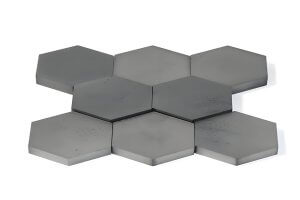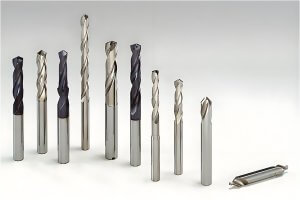In today’s rapidly growing market for custom machined parts, numerous CNC machine shops are emerging, leaving customers with a plethora of options to choose from. Naturally, we all seek the highest quality parts at the best value. So, when selecting a CNC machine shop nearby, it’s crucial to look for one that possesses a competitive edge and excels in various areas, such as workmanship, turnaround time, and on-time delivery. To achieve this competitive advantage, these facilities must prioritize efficiency in their processes, and one proven and effective approach is the application of lean manufacturing principles.
Understanding Lean Manufacturing in a CNC Shop
Basically, lean manufacturing aims to maximize a CNC shop’s production output by minimizing waste throughout the manufacturing process. This methodology traces its roots back to the 1930s when Toyota pioneered the concept of waste elimination on their production lines, leading to significant improvements in efficiency.
Over time, industry experts have identified eight major categories of industrial waste, commonly abbreviated as DOWNTIME: Defects, Overproduction, Waiting, Non-utilization of talents, Transportation, Inventory excess, Motion waste, and Excessive processing. Let’s delve into each category to better understand the potential sources of waste in a CNC machine shop:
Defects
Defects refer to parts that do not meet the required specifications due to dimensional inaccuracies or undesired surface finishes. These defects can arise from various factors, including poor machining parameters, machine malfunctions, low-quality tools, uncalibrated instruments, and inadequate planning of machining processes.
Overproduction
Overproduction occurs when a CNC machine shop produces parts in quantities exceeding the actual demand. This waste often stems from poor planning and lack of coordination in order placements.
Waiting
Waiting refers to the idle time that occurs when resources or processes are not available as needed. It includes waiting for raw materials, machine breakdowns, and other unforeseen delays. Poor planning and inadequate maintenance practices can contribute to excessive waiting times.
Non-utilization of talents
This waste category encompasses the failure to effectively utilize the skills and talents of employees. It can result from poor work allocation, lack of training, or insufficient engagement of the workforce.
Transportation
Transportation waste involves the unnecessary movement of materials, tools, or parts between processes. By streamlining the flow of resources and minimizing unnecessary transport, a CNC shop can reduce wasted time and effort.
Inventory excess
Inventory excess occurs when a CNC machine shop holds an excessive amount of raw materials or finished parts. This waste ties up capital and valuable space while offering no immediate return. Effective inventory management is crucial to avoid excessive inventory buildup.
Motion waste
Motion waste refers to unnecessary movement or actions that do not add value to the final product. In a CNC shop, this can include inefficient tool placement, disorganized workstations, or unnecessary worker movements. Streamlining these aspects can significantly reduce waste.
Excessive processing
Excessive processing refers to unnecessary or redundant steps in the machining process that do not contribute to meeting customer requirements. It can arise from poor process design, lack of standardization, or failure to optimize workflow.
Implementing Lean Principles in a CNC Shop
To successfully implement lean manufacturing principles in a CNC machine shop, the following strategies can be employed:
1. Maximizing Tooling Efficiency (tooling selection)
Careful selection of tools is crucial for achieving high-quality parts. CNC shops should consider factors such as tool lifespan, cutting quality, and compatibility with different materials. Optimal tooling utilization minimizes defects and improves overall productivity.
2. Being Smart with Machining Parameters and Processes
Manufacturing engineers should plan machining parameters, such as feed rate, cutting speed, and depth of cut, to extract the maximum value from CNC machines, materials, and tools. Additionally, optimizing the arrangement of machining processes helps eliminate waste caused by defects, excessive motion, and unnecessary processing steps.
3. Consistent implementation of periodic and preventive maintenance
Regular maintenance and timely equipment checks are crucial to prevent unexpected machine breakdowns, which can lead to prolonged waiting times, defects, and idle talent. By adhering to scheduled maintenance routines, CNC machine shops can minimize downtime and improve overall operational efficiency.
4. Just-in-time Production (JIT)
Effective planning and scheduling play a key role in achieving just-in-time production. By optimizing the inflow, processing, and outflow of resources, such as raw materials and finished parts, CNC shops can reduce waiting times caused by material unavailability and minimize excess inventory.
5. Organizing for productivity
Implementing organizational strategies, such as the 5S methodology (Sort, Set in order, Shine, Standardize, and Sustain), can significantly improve workflow efficiency. By systematically arranging workspaces, tools, and materials, CNC shops can eliminate waste associated with motion and underutilized resources.
6. Strategic Plant Layout
Thoughtful plant layout design is crucial for minimizing wasteful transportation. Placing raw material racks near relevant operations, strategically arranging machines to facilitate part transfer between processes, and positioning finishing equipment near the packaging area are all examples of effective layout considerations.
7. Continuous improvement initiatives
Sustaining continuous improvement is essential for long-term success in lean manufacturing. CNC machine shops that prioritize ongoing process refinement and encourage employee involvement in identifying and addressing waste can consistently deliver high-quality parts and meet customer expectations.
By incorporating lean manufacturing principles into their operations, CNC machine shops can enhance efficiency, reduce waste, improve product quality, and ultimately provide customers with superior products and services.
Recommended Reads:
- Choosing the Right CNC Factory for Your Porudct Prototype
- How CNC Machining Changed Sculpting
- Case Reviews: How to Choose Materials for Milling Machine Parts
- The Future of Smart CNC Prototyping
- Advanced Techniques for Machining Holes: Unveiling CNC Services’ Expertise
Other Articles You Might Enjoy
- Precision CNC Machining for High-Performance Industrial Machinery
Precision CNC Machining for High-Performance Industrial Machinery The process of Precision CNC (Computer Numerical Control) machining is at the core of manufacturing high-performance industrial machinery. This technique leverages a computer's…
- CNC Machining for Medical Applications: Compliance and Material Selection?
Introduction to CNC Machining in Medical Applications CNC or Computer Numerical Control machining is a manufacturing process wherein pre-programmed computer software dictates the movement of factory tools and machinery. This…
- Material Versatility in CNC Machining: From Titanium to Thermoplastics
Introduction to CNC Machining CNC machining stands as a cornerstone in the manufacturing sector, enabling the precise creation of parts and components. This process utilizes computer numerical control (CNC) to…






